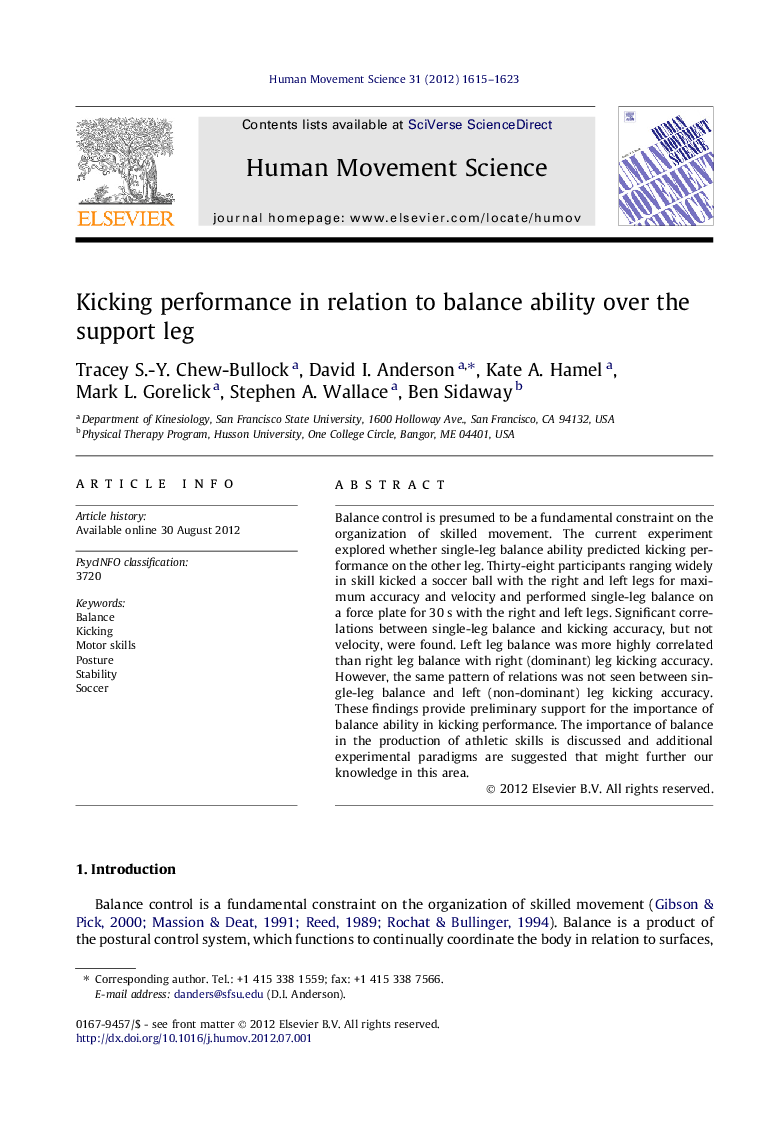| Article ID | Journal | Published Year | Pages | File Type |
|---|---|---|---|---|
| 928521 | Human Movement Science | 2012 | 9 Pages |
Balance control is presumed to be a fundamental constraint on the organization of skilled movement. The current experiment explored whether single-leg balance ability predicted kicking performance on the other leg. Thirty-eight participants ranging widely in skill kicked a soccer ball with the right and left legs for maximum accuracy and velocity and performed single-leg balance on a force plate for 30 s with the right and left legs. Significant correlations between single-leg balance and kicking accuracy, but not velocity, were found. Left leg balance was more highly correlated than right leg balance with right (dominant) leg kicking accuracy. However, the same pattern of relations was not seen between single-leg balance and left (non-dominant) leg kicking accuracy. These findings provide preliminary support for the importance of balance ability in kicking performance. The importance of balance in the production of athletic skills is discussed and additional experimental paradigms are suggested that might further our knowledge in this area.
► Directly tested the presumed link between postural stability and performance. ► Showed significant correlations between single leg stability and kicking accuracy. ► Showed an asymmetry between single leg stability and kicking accuracy. ► Results provide support for the dynamic dominance model of motor lateralization.
